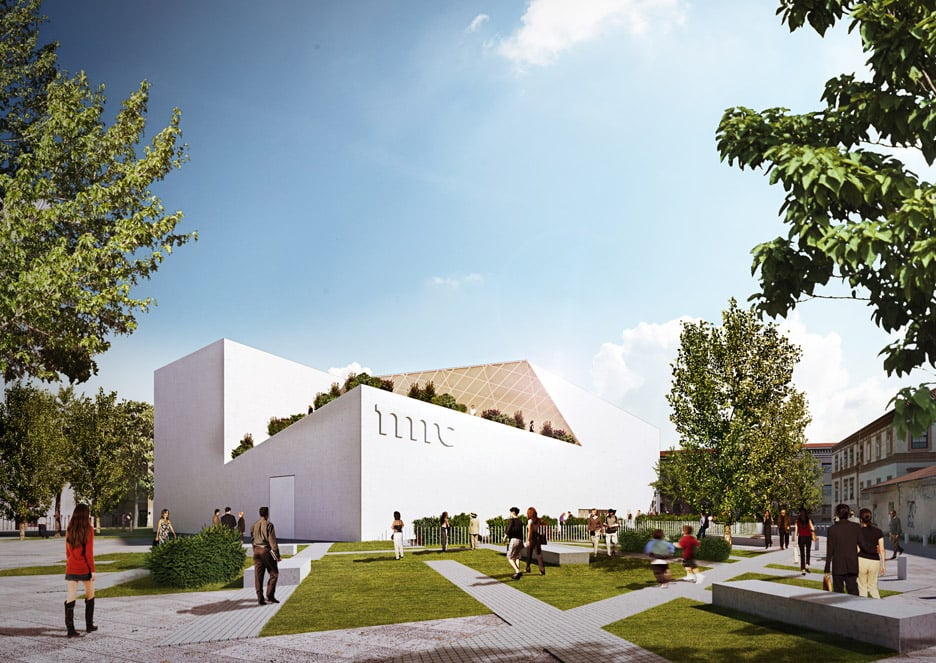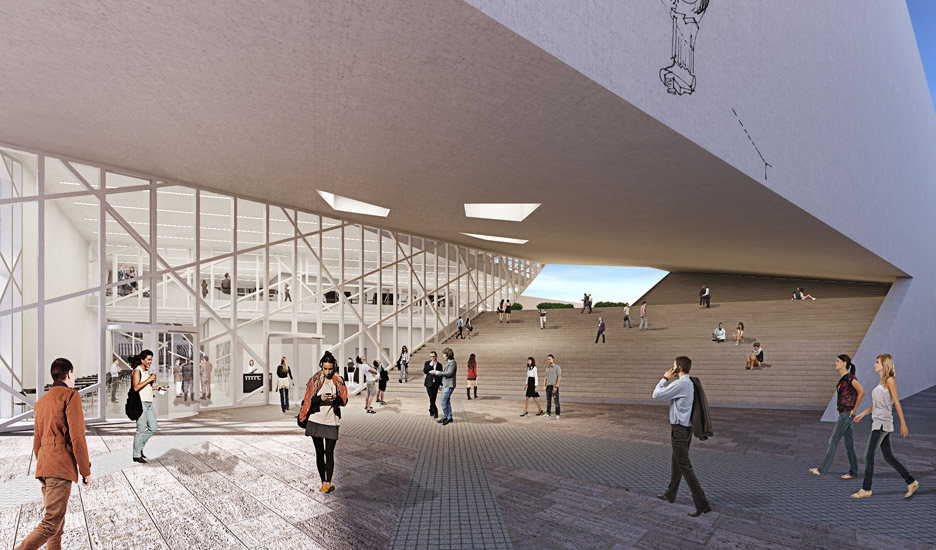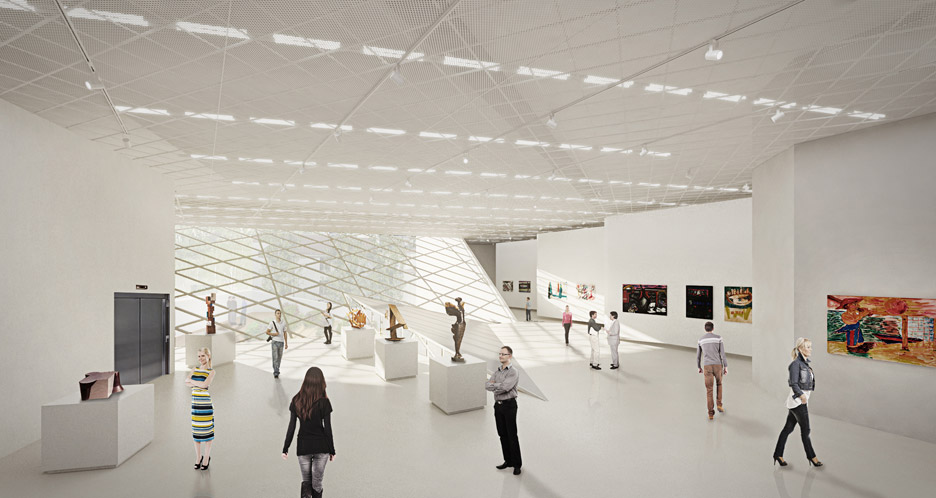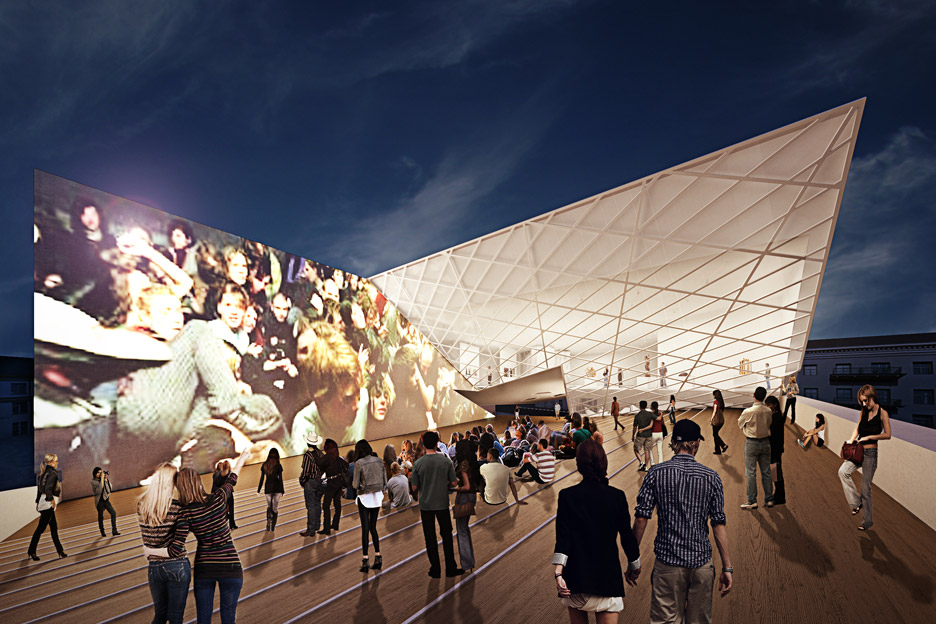Daniel Libeskind designs angular white concrete and glass museum for Lithuanian art
Studio Libeskind has unveiled plans for a contemporary arts centre in Vilnius, which will house a unique collection of modern and contemporary art by Lithuanian artists (+ slideshow).

Due to open in 2019, the Modern Art Center (MAC) will take the form of a white concrete-clad cuboid, with large angular chunks cut out to create a connected courtyard and roof garden.
The 3,100-square-metre museum will occupy a site adjacent to Vilnius' medieval city on a new public piazza. The design is meant to act as a symbolic gateway between the old and new parts of the city, and to reference local architecture through the choice of materials as well as its shape.

"Two volumetric forms intertwine to create a structure that flows between inside and outside," said Studio Libeskind, the US-based firm founded by Polish-American architect Daniel Libeskind.
"The interior courtyard cuts through the entire form and features a dramatic staircase that leads to a public planted-roof and sculpture garden that connect directly to the piazza at street-level."

Most of the natural light that will penetrate the interior will enter the building via floor-to-ceiling glazing around the courtyard space. A five-metre cantilever will provide shade for the southern side of the building.
Inside, a triple-height entrance space will lead through to a double-height lobby, which will provide access to 1,000 square metres of exhibition space with an open floor plan.
A cafe, bookshop, educational facilities and auditorium will also be housed in the building, alongside storage space and offices.

"The Modern Art Center not only creates a home for this extraordinary collection, but the design connects the galleries to the street and the urban fabric – giving the citizens of Vilnius a new cultural centre infused with public space," said Daniel Libeskind.
It will be free to the public, and will house the collections of philanthropists Viktoras Butkus and Danguole Butkiene, who are co-founders of the museum.

The 4,000 pieces of Lithuanian art that will form the museum's foundation collection date from 1960 onwards, and include significant examples from the Soviet era.
"This collection is about the cultural legacy of the country," said Viktoras Butkus. "Libeskind's work is expressive, innovative, and, most importantly, has the power to tell the story of the past while connecting to the future of the city."
Related stories: more architecture and design in Lithuania
Construction of the MAC building is due to begin in 2017.

Speaking in London earlier this month, Libeskind said that architects needed to be more confrontational with their buildings.
"I'm always surprised that people think that architecture should be comforting, should be nice, should appeal to your domesticity. Because the space and the world is different," said Libeskind, whose previous projects have included the masterplan for New York's World Trade Center site and the Jewish Museum in Berlin.
Libeskind's New York-based studio is also currently working on a pyramid-shaped skyscraper in Jerusalem, a trio of towers in Milan that look like Trimphone telephones, and a 60-storey skyscraper with a segmented pinnacle in the Philippines.
Project credits:
Architect: Studio Libeskind
Local architect: Do architects
Engineers: Baltic Engineers